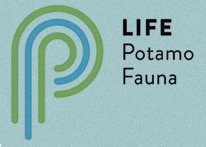ARTICLE / "Naiad conservation in the Ter and Fluvià river basins"
Naiads are freshwater mussels that live in semi-buried conditions at the bottom of rivers, streams, canals and ponds. They are filtering organisms that feed on suspended matter, so they are very sensitive to changes in water quality. They act as an indicator species of ecological status. In fact, in Greek mythology naiads were nymphs or fairies that lived in the water and took care of it. They have a special life cycle, as larvae naiad they have to fix to the gills of a host fish for a few days until maturity, when they fall down and begin their life in the sediment.
In the Ter and Fluvia river basins 5 different species of native naiads have been described, Unio mancus, U. ravoisieri, Potomida littoralis, Anodonta cygnea and A. anatina and all of them have declined or endangered populations. The main threats are the flow reduction of rivers, the changes in the river margins dynamics and the destruction of riparian forest, the loss of water quality, the decline of native fish species and the effect of the new exotic fish and naiads.
The LIFE Potamo Fauna project aims for the population recovery of naiadsU. ravosieri and U. mancus of the rivers Ter and Fluvia, included in the European directives of wildlife conservation under the name of Unio elongatulus. The main activity is the breeding of the two species and the repopulation of the environment. Isolated populations have been detected in some sections of the river Ser, Brugent, Llémena and Fluvia, as well as Lake Banyoles, often with low densities. The project plans the creation of new populations in different sections of the rivers that are maintaining good ecological quality. During the current year more than 130,000 juveniles of both species have been bred using mediterranian barbel (Barbus meridionalis) as a host fish in the naiad breeding laboratory managed by the Consorci de l’Estany, located in the BanyolesLake. They are currently in the survival and fattening phase, and will not be released to the environment until they reach a size greater than 2 cm., to avoid predation and to ensure the success of repopulation.
Author: Carles Feo, LIFE Potamo Fauna technician


















